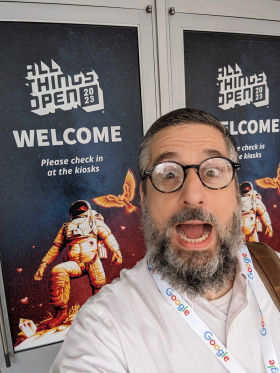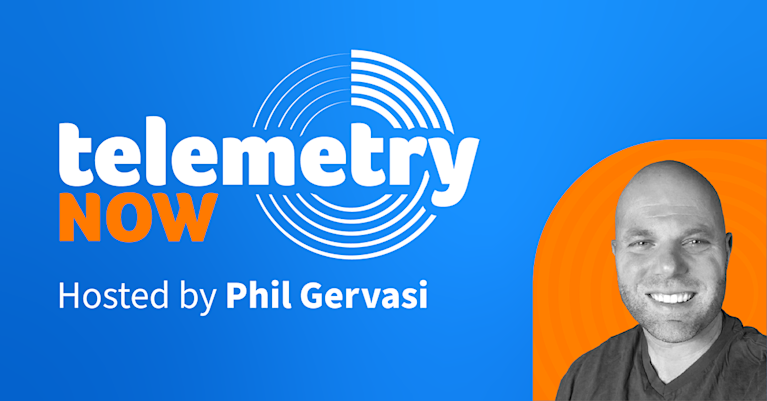The Driving Force of Community at All Things Open 2023


Summary
The most noticeable takeaway from All Things Open 2023 was how visibly and demonstrably people were there for the event itself. Not to check a box or browse the swag but to be together, show their support of open source, and glean every last bit of knowledge they could.

I recently attended my second All Things Open conference and wanted to share some of the observations, experiences, and lessons I learned along the way.
As conferences go, All Things Open stands out to me for a few reasons. Hosted at the Raleigh Convention Center in North Carolina, it’s one of the few larger shows that doesn’t sit in a wallet-busting city. And, at ~5,000 attendees, it’s definitely one of the more significant events, standing out from events like DevOpsDays, BSides, and even Monitorama, which attract much more modest crowds. And, of course, it stands out because of its focus. While every event – from the aforementioned DevOpsDays all the way up to the monster conferences like Cisco Live, VMware Explore, and re:Invent – contain an acknowledgment of the importance of open source tools – none of those events are so wholly and wholesomely focused on the tools, techniques, and community that make open source the powerful force for good that it is.
It’s hard to imagine any other event supporting over 200 sessions covering a comprehensive range of topics, from how to build and maintain inclusive and engaged communities; to the latest coding tools and techniques; and even including topics like how to make your alerts suck less.
Committed to open source
But this “speeds and feeds” description doesn’t capture the heart of the event. What is most noticeable at All Things Open is how visibly and demonstrably people are there for the event itself. They aren’t there to check a box or browse the swag. It’s clear when you watch the interactions in the hallway and see the attendance in the room that everyone is there to be together, or show their support of open source, and to glean every last bit of knowledge they can.
By way of explanation, I will share an anecdote that I promise is not a #humblebrag. My talk was scheduled for the last time slot of the day (3:45-4:30) on the last day of the event. By that point, even the vendors were packing up. I expected to have about ten people come to my session if for no other reason than I was sure people had flights to catch, parties to attend, dinners to eat, and so on.
By 3:40, the room was filled to capacity.
It was surprising, humbling, and immensely gratifying. But I hold no illusions that I’m some powerhouse speaker who can draw a crowd by virtue of my name, far from it. No, it was clear that everyone in the room was there because they wanted to hear about monitoring and alerting. Moreover, they were committed to attending every aspect of All Things Open to the fullest.
If nothing else, that should explain why this event stands out.
Open source community
As I’ve already mentioned, the topic of community was ever-present during the event. From sessions and vendors providing the nuts-and-bolts view of how to build a community platform to the more psychological and sociological aspects of creating community spaces that were open, welcoming, and supportive, community was front and center in 10% of the sessions and everywhere in the hallway track.
This should surprise nobody, as the entire concept of open source software is built upon the idea of community support. Often, that’s presumed to mean a community of developers working together toward a common goal (if not a common good). But for anyone who dips even a toe into an open source project, the truth becomes apparent almost immediately: community goes far beyond the people with hands on the keyboard slinging code, fixing issues, and submitting pull requests. It goes to the folks promoting the project, finding new and exciting ways to blend two or more projects together, using the solution during a hackathon, or even (maybe especially) providing financial support.
None of that happens by accident or “organically” on its own. Creating a community is an intentional act and goes far beyond the idea of logging issues or providing support. To be sure, vibrant online communities have a distinctively grass-roots feel and a by-the-nerds-for-the-nerds appeal. But an online space that passes what I call “the Bechdel test for community”* requires more than “I’ve got some support agents, and my uncle has a slack channel, so let’s put on a community” level of planning.
It should be clear that the things I heard and learned about community made an impact on me, and I hope you’ll see some of those lessons reflected in changes to Kentik’s own community strategy in the very near term.
* 1 - two or more community members with completed profiles; 2 -speaking to each other (not a staff member); 3 - about something other than the vendor
Carefree open source
For me personally, this event stood out because of what I didn’t do: for the last ten years, most of the events I’ve attended have been ones where I had to also work in the booth, talking about the company, giving demonstrations, and handing out swag. At some events, this job took up every spare moment, from the opening of the floor in the morning until the last beer bottle was cleaned up at night. At others, I’d have a half-day shift and could spend the rest of the event wandering around.
Unless you’ve also had this experience, it’s hard to understand the distraction this imposes and how it’s difficult to fully invest in the event and really explore, listen, and learn.
But in this case, I was a free agent, and I tried to make the best use of it – attending every session that piqued my interest or tickled my fancy, chatting with vendors about their product, their swag, or just their opinion of the industry. That respite from the responsibilities of representing “the brand” was an unexpected and utterly delightful breath of organizational oxygen, and I won’t soon forget the lesson.
Closing
If your budget has room for a little travel and a lot of learning, All Things Open should be high on your list of options to consider. They’ve already announced the dates for next year. I know I’ve already added it to my calendar.
If you were at All Things Open 2023, and I walked past you without saying “hello,” chide me in the comments below or on LinkedIn. Or share your observations to keep this conversation going.


